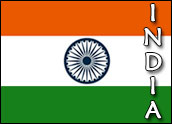
On the eve of President Bush’s first visit to India, people in both countries are re-examining U.S.-India relations, with special attention being paid to economic relations. An account of outstanding issues in U.S.-India economic relations and India’s moves to institute economic reforms can be provided through the record of one man. In this context, we can identify opportunities for improving U.S. ties with the world’s largest democracy.
One of the most important members of the current national leadership is Mr. P. Chidambaram, who is serving as India’s Finance Minister. P.C., as he is called, served in the same post in the United Front coalition government that ruled India from 1996 to 1998. During both tenures, P.C. has been favorably viewed by many Indians in that country’s tech sector. He holds an MBA from Harvard.
By spearheading economic liberalization and reducing India’s internal economic cross-subsidization during the United Front period, P.C. freed up public sector funds and reduced revenue demands. His hands-off approach to foreign and domestically owned tech firms during the late 1990s gave them the freedom to grow and to tap into India’s pent-up economic and intellectual potential. His reforms accelerated India’s rise to become a true world-class power and to contribute to the economic prosperity of its western trading partners.
Creating an Internal Common Market
P.C.’s second term as Finance Minister has not been met with the same level of praise from the general public in India as he received during his first term. This can be attributed to the difficulties associated with nationwide macro-economic change.
One of P.C.’s policy initiatives has been to create a stronger internal economic union within India. P.C. accomplished this by reducing inland revenues, called octroi, a holdover from the time of the East India Company.
By substituting a value-added tax (VAT) system for octroi taxes on goods transported from one Indian state or city to another, Chidambaram is opening India up to increased internal trade. A more robust domestic market has made India a more attractive investment destination.
Two Controversial Taxes
A corporate income tax scheme initiated in September 2004 by the Finance Ministry against U.S. and other foreign IT firms — but not domestic ones — has created economic uncertainty for foreign firms considering establishing or expanding captive operations in India.
For additional information, see: India to Tax US Outsourcing Firms.
Taxes levied by India on goods in transit to Nepal have been a long-standing source of controversy with India’s northern neighbor. Many Nepalis assert that Indian taxes are strangling their economy, creating anti-Indian sentiment and contributing to a Maoist insurrection that threatens regional stability. Permanently eliminating those taxes or opening a tariff-free transit corridor between Nepal and Bangladesh will increase trade and ultimately reduce Nepal’s dependence on foreign aid.
Two Challenges
There are two challenges facing India’s Finance Ministry today. The first is constitutional and legal in nature. The second stems from the nature of that country’s coalition politics.
“Ambedkar may have changed the constitution after 1947, but he didn’t change the laws,” is a popular saying that refers to the man credited with writing much of India’s post-colonial constitution. Despite the adoption of a new constitution after 1947, much of India’s legal and economic framework is a holdover from colonial times.
The Government of India (GoI) Act of 1935 was the longest bill ever passed by the British Parliament. Although never enacted on the federal level in India, it became the basis for the interim constitutions of both India and Pakistan after 1947. The act established revenue distribution authority between states and the national government (referred to as the Center). The act gave considerable power to state governments and continues to define the “the revenue question.” Even in colonial times, the revenue question was never fully addressed and deficits were common.
India’s first national leaders following independence established a socialist economic system that controlled prices, limited infrastructure growth, and subsidized some sectors of the economy at the expense of others. Although cross subsidization and some price controls have been reduced or eliminated, the revenue question and utility infrastructure shortfalls remain.
The legacy of socialist planning and India’s ongoing revenue shortfalls are the two major factors that are slowing reform efforts. However, P.C. has instituted reductions in personal income tax rates in an effort to improve collection.
India’s reliance on import tariffs has been reduced since the 1990s, but tariffs continue to represent a major barrier to U.S.-India trade. Lowered tariffs would reduce Indian importers’ temptation to use Nepal for tariff avoidance.
India’s Legal System
A major challenge facing India is the inability of its legal system to keep pace with that country’s rapid growth since 1947. Issues surrounding the legal system have reached the point where they can be considered trade issues. Although outside the purview of the Finance Ministry, the challenges facing India’s legal system are impacting U.S.-India economic relations.
India’s overburdened legal system is unable to resolve commercial disputes in a timely manner, raising three types of risks for U.S. firms operating there:
- In business-to-business transactions, a poorly functioning legal system encourages poor credit and payment behavior by some of India’s largest and most profitable firms. It can be difficult or impossible to oblige some Indian firms to pay their final invoices. Conducting business where there is a high probability of final nonpayment encourages firms to attempt to bill for work before it is performed, thereby distorting business relationships throughout the value stream.
- In employer-employee relations — which can sometimes be exploitative, even in the tech sector — the lack of functional legal venues is prompting two Indian labor organizations to begin membership drives among that country’s call center workers. If employees cannot seek protection from the courts when they believe that they have been badly treated, they may opt to proactively bring in labor organizations to represent them, permanently changing the workplace environment.
- Protection of intellectual property and customer data becomes difficult without quick access to legal remedies in the event of a purported breach of confidentiality or intellectual property rights. Laws and contracts protecting intellectual property and customer data can be ineffective without the means to enforce them.
U.S.-India economic relations are not only affected by the state of the civil court system, but also by the operation of India’s criminal justice system. An overstretched and poorly supervised criminal justice system is putting the safety and security of Westerners and Indians at unnecessary risk, including U.S. consumers faced with the prospect of remote account tampering and financial fraud.
Within the public sector, particularly at the state and local level, there are long-standing patterns of corruption by some officials seeking payoffs in exchange for allowing projects to proceed. Efforts to reduce corruption are frequently stymied by the nature of India’s coalition politics, whereby ruling coalitions are reluctant to pursue anti-corruption cases against coalition partners. Corruption cases of parties who are not part of ruling coalitions cannot be husbanded through India’s justice system at anything but glacial speed.
Coalition Politics
The second challenge facing the Finance Ministry is that it is part of a coalition government. Led by the Congress Party of India (Congress-I), this coalition includes both the Communist Party of India (Marxist) and elements from the moderate Tamil Maanila Congress (TMC), of which P.C. hails. The TMC merged back into Congress-I after the death of the TMC’s founder G.K. Moopanar in 2001.
India is a multi-party democracy that includes a preponderance of local and regional parties. The distributed nature of power can impede decisive action on the national level and can slow economic reforms.
American efforts to negotiate with top officials of the Center are, in my experience, often ineffective, because the Center does not always hold firm sway over national policies or large sectors of public opinion. The fact that India is a young democracy with highly influential regional leaders means that consensus building and policy reform efforts need to extend beyond government offices in New Delhi.
Importance of Regional Ties
American diplomacy often does not have time for New Delhi, let alone the Chief Ministers of India’s most powerful states. As our economies become more intertwined and co-dependent, new and stronger private and public sector ties need to be maintained.
Better ongoing contacts are needed not only with all the elected Chief Ministers, but with the major opposition parties that play a key role in determining policies.
Americans need to learn how to deal with the media in India and need to reach out to the media on a more frequent basis. Better media relations will reduce the potential for misinformation that damages U.S.-India economic ties. President Bush’s first visit to India is a good first step. More steps are needed.
Anthony Mitchell , an E-Commerce Times columnist, has beeninvolved with the Indian IT industry since 1987, specializing through InternationalStaff.net in offshore process migration, call center program management, turnkey software development and help desk management.



















































Social Media
See all Social Media